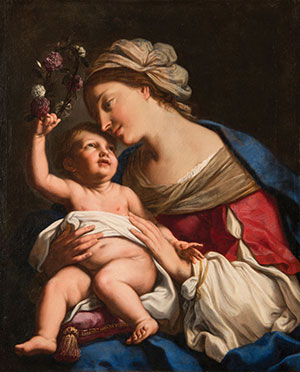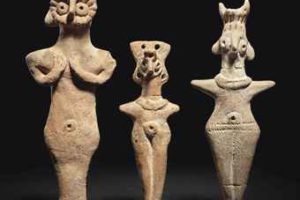Roman Catholics and Protestants disagree about Mary.
From among Protestants, I have seen both (a) condemnation of Roman Catholics for idolatry or syncretism and (b) genuine and healthy curiosity and desire to understand “Our Lady,” the great and holy woman who bore Jesus Christ.
Why some Protestants love Mary
My “Type B” friends have several great reasons for wanting to engage Mary:
1. Her beautiful song—The Magnificat (Lk 1.46-55)—demonstrates stunning scriptural wisdom and knowledge of the God who Saves.
2. By virtue of her “Yes,” she foils Eve, who said “No.” She is the New Eve to the New Adam of Jesus.
3. Her physical and spiritual motherhood is deeply instructive for young women trying to understand and inhabit their femininity in a male-dominated church culture.
4. Spiritual reflection on Christ being born in her. Hopkins’ “The Blessed Virgin Compared to the Air We Breathe” is a magnificent poem along these lines.
5. Or, if you’re me, her hermeneutics of “treasuring up” is an even more Christ-focused version of Sydney Carton’s meditation on John 11.25-26 in A Tale of Two Cities and Ebenezer Scrooge’s childlike, yet voracious attention to the mysterious revelations from the Ghost of Christmas-yet-to-Come in A Christmas Carol.
A number of these friends of mine feel so drawn to Mary that they fear their “taboo” curiosities belong in the Roman Catholic Church, and that they ought to convert. (I suspect that most of these friends need to reflect more critically on the implications of the Roman exclusivity of the Eucharist and their disparaging account of the bodies that we Protestants sincerely call our churches.)
I am of the opinion that one need not leave his or her Protestant Church out of devotion to Mary. What I endeavor to offer in this post are three reasons why “Type A” Protestants don’t want Mary in their worship.
Why other Protestants don’t
Many Protestants do engage the figure of Mary in their daily worship. Somehow, the Book of Common Prayer is able to hold to both (a) Protestant rejection of the necessity of holding Roman doctrines concerning Mary (Cranmer still affirmed Mary’s perpetual virginity) and (b) including the Magnificat in its order for daily prayer, commending it for the daily use of Christians.
But on the whole, we don’t. An SBTS professor recently shared a helpful article on Desiring God detailing the history of Marian dogma and indicating several points of Protestant disagreement: necessity of belief in her bodily assumption into heaven, her being born without original sin (or “immaculate conception”), and her status of Queen of Heaven or co-redemptrix.
Still, I don’t think this is the real reason why loving Mary together as a church is a Protestant taboo. I think the real reason is similar to the reason many of our churches are more familiar with popular praise choruses than the Psalms: we have a thin understanding of the importance of our bodies in Christian life and worship. Mary’s relation to Christ was inimitably yet instructively bodily: he gestated inside her womb and then threw her into what must have been howling pain as he emerged into the world that would reject him.
This is a three-part reflection on what Christian life and worship is that, I hope, sheds light both on why much of our practice of worship is out-of-conversation with our bodilyness and on reasons we might struggle to love Mary:
Worship is of God in Heaven. I won’t parse this: we worship the Triune God both as he eternally is and for the saving work on our behalf which he has revealed in history. After Jesus returned home in his heavenly ascension, he and his Father sent us their Spirit to inform and empower our worship. “He is not here,” as the angels have said, and we worship—sometimes with our eyes closed—someone we cannot see. This is the part of worship that I think we’re usually pretty good at.
Worship is liturgically preparatory. God uses our ofearing of ourselves in worship—both the singing in Church and doing all sorts of other things (Rom. 12.2)—to form us for the future he has prepared for us. But in many Protestant churches, we do not go much further than songs of praise that imagine and spiritually inhabit the heavenly throne room and join in with the song of the living creatures, the elders, the martyrs, and the angels, and the church militant and victorious. Many of our churches gather every Sunday to sing these songs as a rule of life. Some churches host additional weekly worship services—both for themselves and for other churches in the community. Other churches host special worship services that correspond to the Church calendar.
Whether we say we have liturgies or no—and anyone who has listened to Jamie Smith in the past couple of years knows this—everyone who goes to church (or anywhere else) participates in some positive personal formation that prepares them for some end.
Liturgical preparation is bodily. We forget the inescapably human normalness of earthly life while celebrating the heavenly one. We are epidermic bags of blood and bones, and we all die. Ephraim Radner beats this drum in A Time to Keep: “We should speak of human creaturehood in an integral way only by basing our self-conceptions on our present existence. Whatever transformations we may think are promised to us in some future divine gift cannot be ones that in any way subvert the integrity of this present… The ‘garments of skin’ are the ‘way’ into the future; they are a creatures way given and adopted by God and cannot be thrown off without also throwing off our oneness with Christ himself.” (40) He follows this line of reflection on mortality and “skinned-ness” throughout both this book and his theological commentary on Leviticus.
R.R. Reno echoes Radner’s concern throughout his commentary on Genesis, summarizing it nicely: “We are afflicted by the consequences of sin, not by the fact of human emobdiment or finitude… Our transcendent hope for the future… does not encourage an escape from finitude. Keeping God’s commandments is a worldly task that we undertake in our finite embodied lives.” (43) In his lectures on the topic of theological anthropology, Mark Garcia names man homo liturgicus: the one who is full of blood, covered by skin, exists before God because of his parents conjugal and parental love, and will die after a life of work, leisure, loyalty, and longing.
My hypothesis is that a more theologically grounded understanding of the Church’s worship will help us confront the limits of life as we know it.
We will slowly stop mimicking the dancy genres of music that invite us out of our selves into a floaty rejection of our human-ness, and calling us back for more, as if the music was a drug.
We will dethrone the microphoned-mediator called a “worship leader” who sings on our behalf and instead use our own, common, and untrained throats to make “joyful noises” to God together.
We might turn more and more to the relentlessly “bodied” songs of Israel in the Psalms—laments of actual deaths, reflections on mortality, fear of political enemies, physiological responses to the guilt of sin.
We will take more seriously the very human experience of having and raising children and lament more understandably the human pains of infertility and sterility attested to throughout Scripture and our churches, both.
And we might come to love Mary enough together that some of the Mary-loving Christians in our midst don’t feel the compulsion to swim to Rome.
I’ll leave the last words to the evangelical poet, Ian Heisler:
Blessed is she
who grows God a boy in her womb
who makes God big in her heart
who bears “hope-of-all-the-earth-thou-art”
and births the blessing by whom nations will all be blessed
who in the manner of the meek
incarnated heaven’s momentous meekness:
she who recognized her hunger and hence
bore in her belly the Bread of Life
she the stream-bed lowly over which then rushed
the waterfalling blessings out from all the
heavenly realms above to all the earthly lands below
the recapitulated mother of all living
because the mother of the All Living
the one who is before all things
and in whom all things hold together
himself in her grew knit together
all things were held together in a womb
—the firstborn of all creation in gestation
and the fullness of God to fill a fetus
the one before all things and holding all together
became a thing in her, became a part of her,
wound eternal life together with a mother’s
—apart from her receiving motherhood from God, of God, God
was not pleased to reconcile all things to himself—only so to do
through his Son taking on flesh, partaking of our flesh from Mary,
sharing in his human mother’s share in human mirth through misery—
our heraldic newborn joy, and piercing natal pangs before





Leave a Reply
Your email is safe with us.